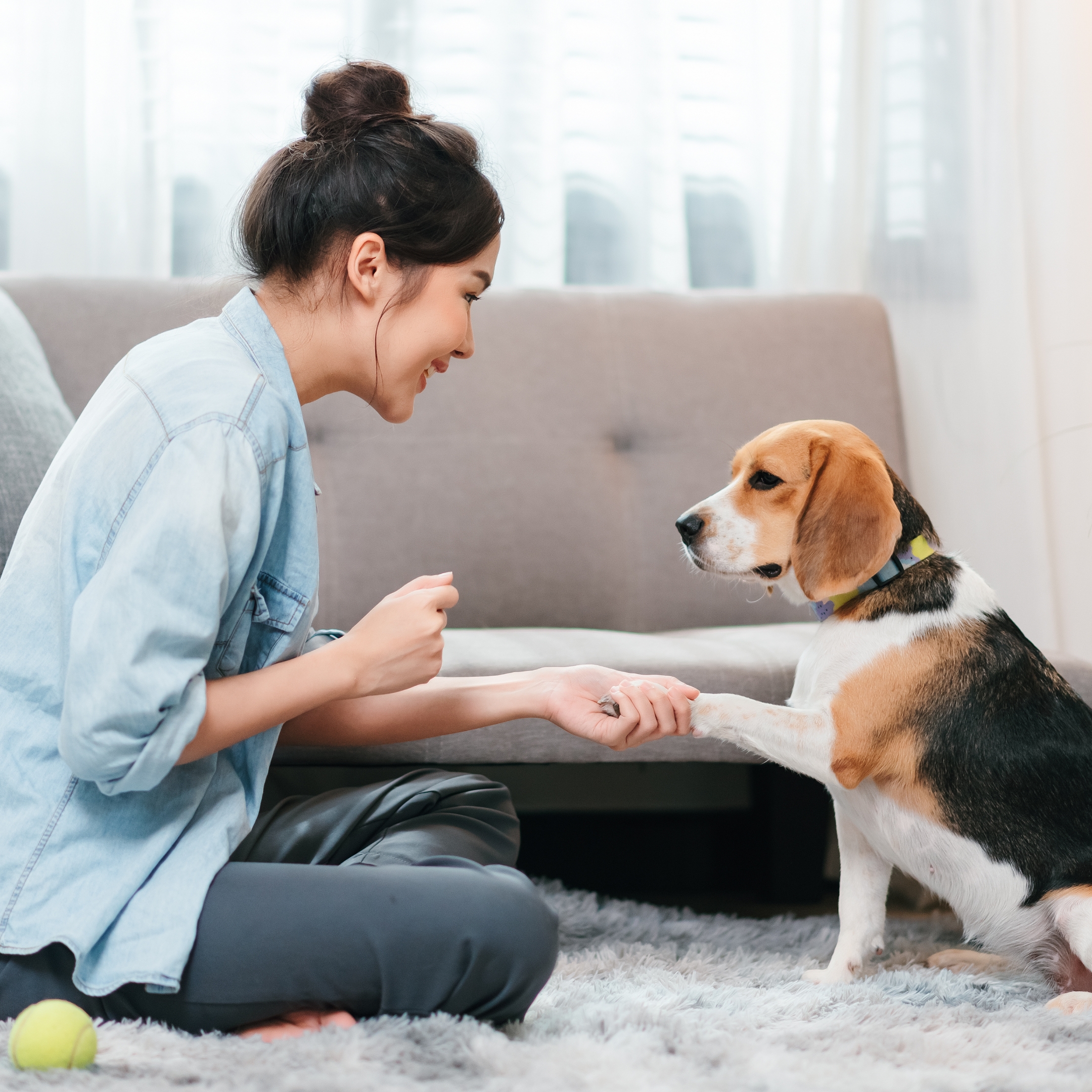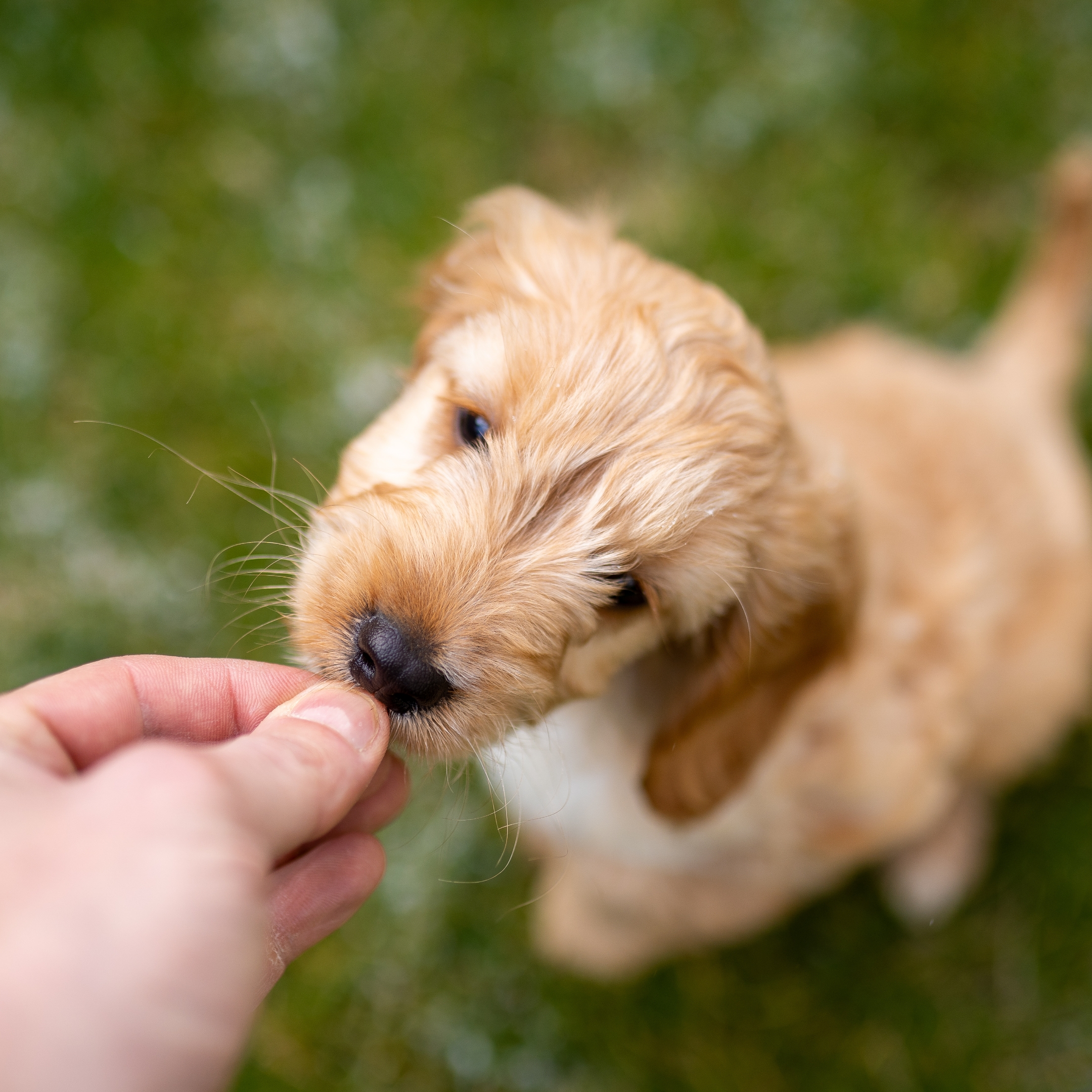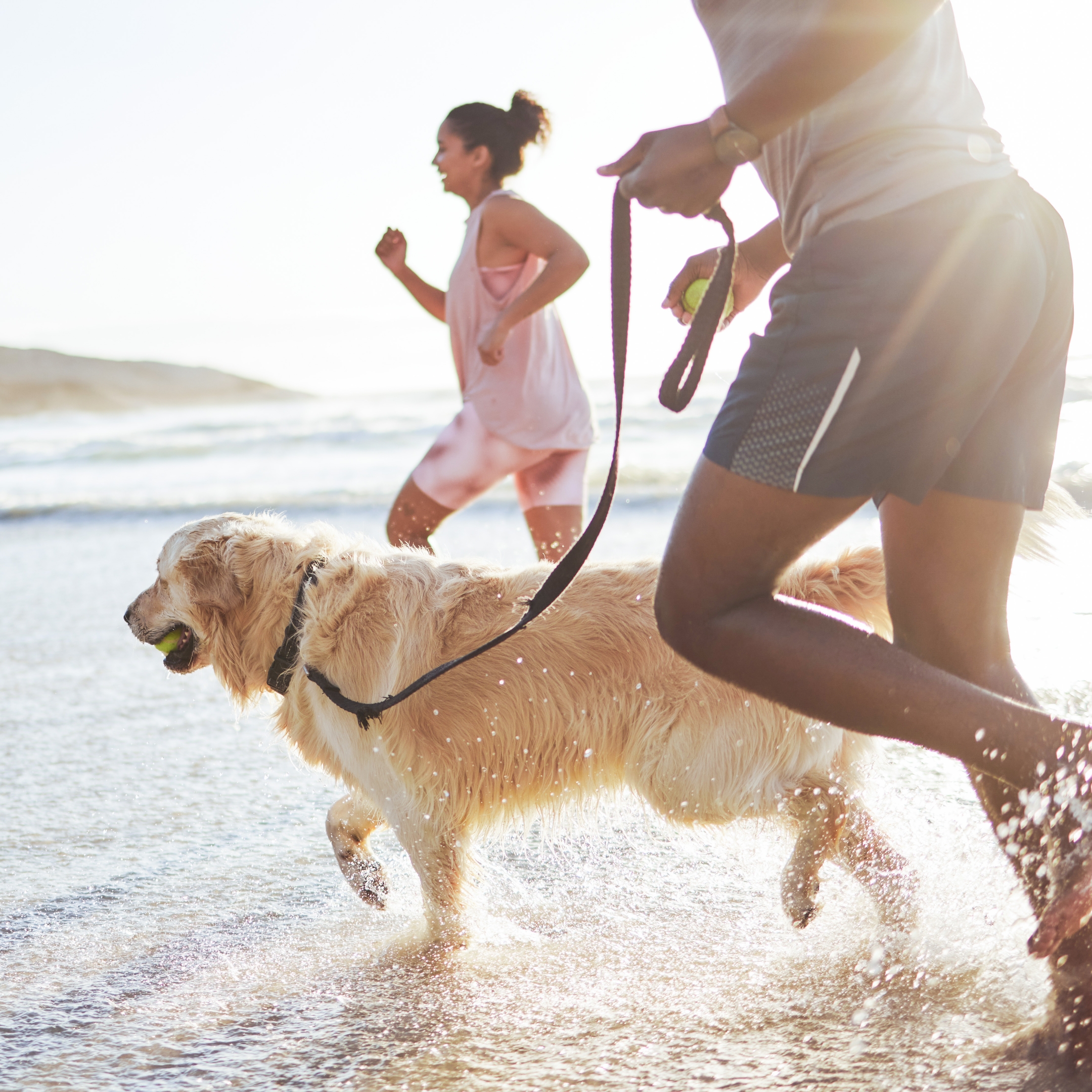EXICITING TRICKS AND INDOOR ACTIVITIES TO TRY WITH YOUR DOG THIS NEW YEAR
Table of Contents
Introduction
Why and how to teach a dog tricks
A word about safety
Easy, fun tricks to teach your dog
Unique tricks to teach your dog
More great resolutions to make with your dog
- For you and your dog together
- For you, for the good of your dog
FAQs
- How can I tell if my dog is uncomfortable doing a trick?
- What can I do if my dog just isn’t getting it?
- What if my dog still isn’t getting it?
- Where can I get some ideas on what tricks to teach to my dog?
To sum it all up…
Introduction
The new year, as we know, is the perfect time to make resolutions: exercise more, save money, learn a new language… It feels good to set ourselves some fresh challenges. And while we might not always keep it up for a full 12 months, it’s still a great way to evaluate our priorities and think about how we want to change our routines and try new things in the year ahead.
So how about sharing the fun with your dog? Our furry friends can get a lot out of trying something new or upgrading their routine. It’s easy to settle into a steady pattern with our pets, but while it feels comfortable, dog boredom is a common thing, and they could often benefit from us doing more to enrich their lives, expand their horizons and support their cognition and physical health.
In this article, we’ll suggest some fun tricks to teach your dog in 2024, explaining why training and games for dogs are an important part of overall health. We’ll cover how to teach a dog tricks safely and efficiently, so they don't get injured or frustrated. And, since you’ll be putting them to work, we’ll suggest some resolutions for pet parents too. It only seems fair!
More than anything, dogs love spending quality time with their family, so all these resolutions will be plenty of fun for your pup. And we think you’ll find them enjoyable too!
Why and how to teach a dog tricks
 We don’t always think of tricks as beneficial to our furry friends, but in reality, they’re fun, healthy puzzles for dogs, teaching them to focus, problem-solve and remember. They’re great tools for countering dog boredom, which can cause destructive behaviours. They can even boost dogs’ confidence, which is helpful for those with reactivity or anxiety. At the same time, they also teach dogs to listen intently and follow instructions, which is good for their safety.
We don’t always think of tricks as beneficial to our furry friends, but in reality, they’re fun, healthy puzzles for dogs, teaching them to focus, problem-solve and remember. They’re great tools for countering dog boredom, which can cause destructive behaviours. They can even boost dogs’ confidence, which is helpful for those with reactivity or anxiety. At the same time, they also teach dogs to listen intently and follow instructions, which is good for their safety.
When you have a puppy, training is an essential part of everyday life. But adult dogs also benefit from being challenged and entertained. Refreshing their training helps boost confidence, strengthens the bond you have with them and supports cognitive health as they age by keeping their mind active and engaged.
Before we look at tricks to teach your dog, let’s talk about training best practice. For humans and dogs alike, resolutions are best if they’re SMART: Specific, Measurable, Achievable, Relevant and Time-Bound. Remember to set achievable goals and tailor these resolutions to your dog's individual needs and your lifestyle.
To help with teaching tricks from the simple to more complicated, here are some basic steps for successfully training a dog to respond:
Keep training sessions short
Bite-sized training keeps things achievable for you and your dog. They learn better in short, fun bursts, rather than long sessions, as they can grow confused and frustrated if they’re not figuring out the task that’s being asked of them. You and your dog are less likely to become irritated or bored if you train in regular short segments, such as the time it takes to boil the kettle, rather than long ones at bigger intervals.
Start small
Just like us when we learn, dogs need to start small and work up to bigger challenges. Often, it helps to teach them the basics, then add more complicated bits one step at a time.
Set measurable and realistic goals
Be as clear as possible on what you’re setting out to do, so you know how to achieve it and when you’re successful. ‘I want to train my dog more’ isn’t as easy to benchmark as ‘I want to teach my dog to do scent work in an outdoor setting three days a week’ or ‘I want to teach my dog to roll over without responding to a treat in my hand’.
Be consistent and reward often…
Some dogs learn tricks right away, while others take more time. However quickly your dog learns, the way to make sure a new trick sticks is positive reinforcement and consistency over time. Reward with praise, and treats – like our handy, healthy Natures Menu Meaty Treats for Dogs.
…Then add challenges as you go
Advanced training often requires linking basic commands together into more complicated sequences. This is true on agility courses, but also for identifying and fetching different toys by name.
Track your progress
For commands like sit and stay, it’s helpful to count how many seconds or minutes your dog can successfully keep on task, as this will increase over time. It’s also good to keep a training diary to track the progress you’re both making.
Make it fun!
At the end of the day, this is all about connecting with your dog and having fun. If you find yourself getting frustrated with them or yourself, it’s time for a break. Come back to it another day.
 A word about safety
A word about safety
When training your dog or trying new tricks, think about their age, breed, mobility level and overall health.
Very young animals have fragile joints which are still developing, which is why vets generally recommend puppies don’t go on very long walks. At this age, physical tricks should remain light, so instead focus on teaching the critical commands that can save your dog’s life (sit, stay, come, and leave it). Scent work and fun games like hide and seek in the house are also fine. Avoid tricks like balancing on their hind legs or too many spins. Keep anything that involves sprinting, like games of fetch, short and sweet.
Older dogs may also start to struggle with their joints or arthritis, so beware of making them do large jumps or anything that could be uncomfortable. Always check they’re physically capable of doing what you ask and provide soft matting if you’re asking them to do something like roll over.
Whatever you’re working on, keep it positive. Punishment and negative reinforcement aren’t recommended or effective for your dog. Training should be fun, not stressful, and you’ll get better results when you work together.
Easy, fun tricks to teach your dog
These easy tricks to teach your dog are the foundation for further training, so they’re a great place to start before moving onto anything more advanced. If you haven’t done much training before or you’re wondering – what tricks can I teach my dog – these are your building blocks.
- Sit, stay, come, and leave it. These critical commands are the most important ones to teach your dog and can actually save their lives. We recommend using guides published by reputable sources, like these tips from DogsTrust or this puppy training playlist by Battersea.
- Once your dog’s mastered those four, train them on other basic commands. These include lie down, useful for getting them to settle; look at me, to always get their attention and touch: this ‘trick’ teaches your dog to touch something with their nose or paw. It's useful for directing their attention to you and boosting their confidence.
- Some easy tricks to teach your dog don’t have any specific use but are a fun bonding experience. These include paw (also known as high five): a classic trick and a very cute one at that. You can also try stand, spin, bow, roll over, and paws up. Remember with these, your dog’s safety and comfort come first. Check they're capable and happy before asking them to do tricks.
Unique tricks to teach your dog
Once you’ve mastered the basics, you’ll find you can teach your dog all sorts of things. Recent advances in dog cognition studies have shown they can learn hundreds of words and are capable of deductive reasoning. There are endless creative exercises they'll enjoy, but here are a few ideas to get you started.
- DogsTrust have some great advanced, safe tricks for dogs, including teaching them to run through a tunnel, tidy up their toys, do a figure 8, and even ten pin bowl.
- Battersea have a full playlist on dog enrichment, including brain games for dogs, and this video is useful if you’re curious about clicker training.
- Many local dog clubs run agility classes, or a more basic version called 'Hoopers', which can be fun and enriching. These also have trainers on hand to help with the more complicated apparatus to keep your visit fun and safe.
- Even simple tricks can be painful or challenging for older dogs, but there are lots of ways you can keep them active and learning. Tricks can be modified, so ‘fetch a ball’ becomes ‘push’. Instead of standing on their hind legs or jumping, they can walk backwards slowly. Keeping older dogs engaged and moving is good for their mobility and overall health. You can read more about training your senior dog here and why not take a look at our blog on how to enjoy time with your senior dog, too.
 Other great resolutions to make with your dog
Other great resolutions to make with your dog
For you and your dog together
- Try to spend more quality time with them, including playing and exercising.
- Take them on a dog-friendly trip, like camping or going to the beach.
- Commit to regular training sessions or dog school.
- Feed them a complete, balanced diet – you could even try going raw.
- Take them to the vet for a wellness check-up.
- Brush their teeth more often.
- Start a step challenge: for example, you could pledge to do 10,000 steps with your dog every day for a month!
For you, for the good of your dog
- Learn dog body language and how to respect your dog’s boundaries. You can read our blog on understanding your dog as a starter or watch this quick primer on dog body language.
- Learn pet first aid and CPR. There are lots of online courses that can teach you critical skills that could save your dog’s life in an emergency.
- Got an anxious or senior dog? Learn about dog massage! It’s great for soothing achy joints and worries and helps you and your dog bond.
FAQs
How can I tell if my dog is uncomfortable doing a trick?
If your dog’s uncomfortable when they’re training, they’ll try to tell you by displaying subtle behaviours like showing the whites of their eyes, licking their lips, moving away, or losing concentration. If that happens, always try to end the session as soon as possible and on a positive note.
What can I do if my dog just isn’t getting it?
Take it back a few steps or make the task easier. If you’re trying a spin and your dog isn’t going all the way around, try rewarding them halfway a few times (or even a quarter of the way), then slowly build up by asking them to go a little further each time. If you’re struggling to get them to lie down, try sitting on the floor with your leg slightly bent at the knee. Encourage your dog to pass under your leg and as soon as their belly touches the floor, give a reward. Repeat a few times, then try raising your leg slightly or not using your leg at all. Again, always end each session on a positive note, so, if necessary, take the exercise back to a step you know your dog can do.
What if my dog still isn’t getting it?
Dogs are like us – they take different times to learn different things. Be patient and try to revert to a trick that’s easier to accomplish. The more basic tricks you can teach, the easier it will be to move onto more complicated ones.
Where can I get some ideas on what tricks to teach to my dog?
There are lots of resources available, including books and YouTube videos, and we’ve included some from sources we trust in this blog. Whatever you’re working from, make sure the trainer uses positive reinforcement to teach the trick, like treats or toys. Alternatively, be inventive! Try to think up some cool things you'd like to teach your dog and set yourself a challenge. Asking your dog to ‘Tidy up!’ their toys when you have friends around can be impressive!
To sum it all up…
Learning something new together is a brilliant bonding exercise for you and your dog, getting you thinking, moving, and working together. It’s also a great reminder to spend some quality time enjoying each other’s company and getting to know each other even better.
If your four-legged friend is new to this kind of thing, there are lots of easy tricks to teach your dog in this blog, and through great organisations like DogsTrust or Battersea. And if you’re not sure exactly how to teach a dog tricks, remember it all comes down to patience, persistence, and positivity. Because the more fun your dog’s having, the more they’ll be learning too!








 We don’t always think of tricks as beneficial to our furry friends, but in reality, they’re fun, healthy puzzles for dogs, teaching them to focus, problem-solve and remember. They’re great tools for countering dog boredom, which can cause destructive behaviours. They can even boost dogs’ confidence, which is helpful for those with reactivity or anxiety. At the same time, they also teach dogs to listen intently and follow instructions, which is good for their safety.
We don’t always think of tricks as beneficial to our furry friends, but in reality, they’re fun, healthy puzzles for dogs, teaching them to focus, problem-solve and remember. They’re great tools for countering dog boredom, which can cause destructive behaviours. They can even boost dogs’ confidence, which is helpful for those with reactivity or anxiety. At the same time, they also teach dogs to listen intently and follow instructions, which is good for their safety.  A word about safety
A word about safety Other great resolutions to make with your dog
Other great resolutions to make with your dog